Existing User Log In
New User Registration
Register for a free account to gain full access to the VGChartz Network and join our thriving community.



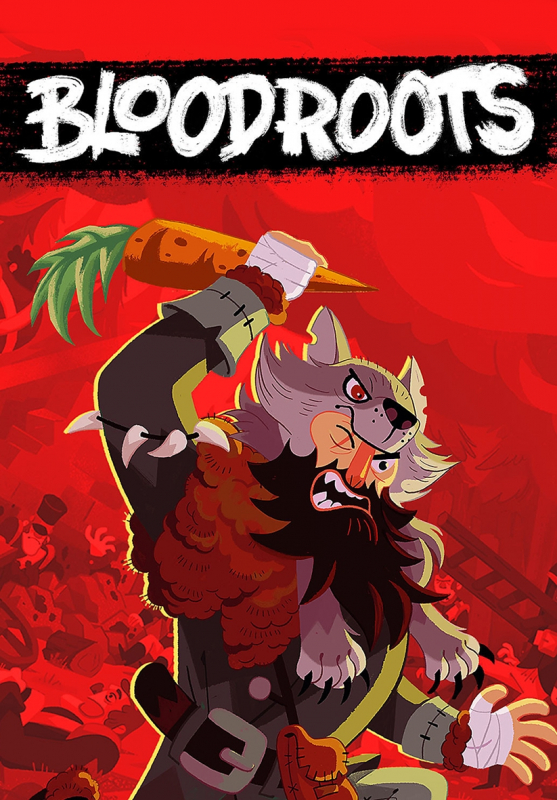

America - Front
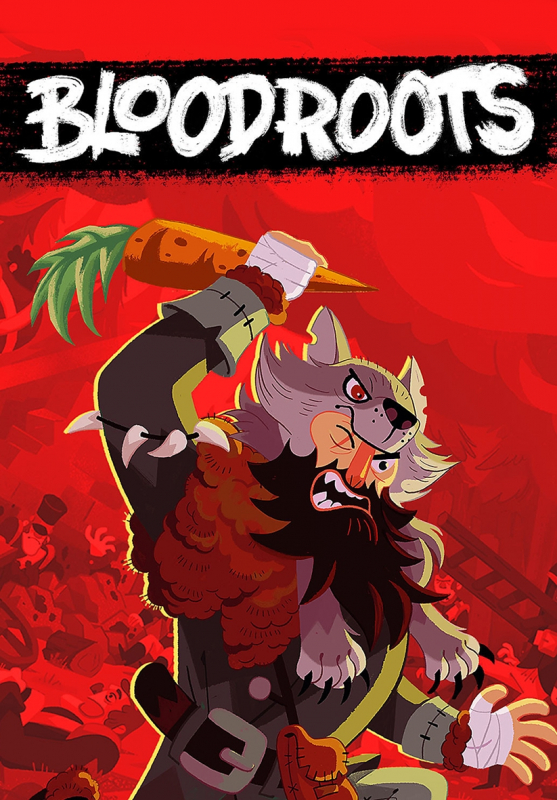

America - Back

Paper Cult
Action
 (Add Date)
(Add Date) (Add Date)
(Add Date) (Add Date)
(Add Date)
| Owners: | 0 |
| Favorite: | 0 |
| Tracked: | 0 |
| Wishlist: | 0 |
| Now Playing: | 0 |
The blood-drenched jacket sleeves of Hotline Miami caught the attention of many around its release. The visceral 80s-themed action tied with your character's fragility added the right nuance at the right time. Fast forward to indie developer/publisher Paper Cult, now that hyper-violent isometric action has been transplanted to the outdoors. "Hotline Montana," if you will. Although Bloodroots successfully finds several of its own nuances, its unbalanced design misses the forest for the trees.
The Weird West is a treacherous place, and especially deadly for anyone crossing Mr. Wolf's path. His winter lumberjack attire mixed with his wolf-hide headdress can be seen from a mile away. After the wanton destruction of TarryTown, Wolf's own gang betrays him. Left for dead with nary a peep for months, the ruined Wolf is magically resurrected. Returning from convalescence, there's only one thing on his mind: revenge. With his sights set upon Mr. Black Wolf and former Blood Beasts members, Mr. Wolf ravages entire countrysides for this singular mission.
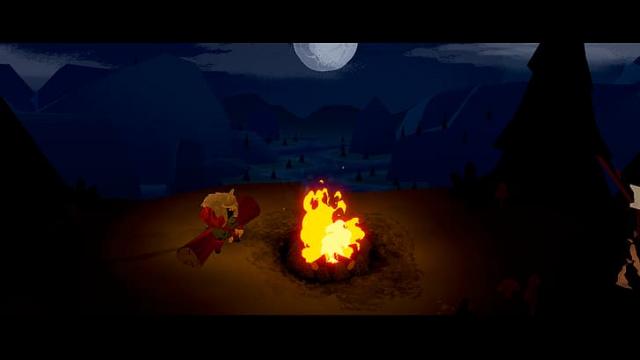
As a formulaic synthesis of the murder-revenge tale, Bloodroots finds success through its frenetic style; think if The Revenant had the tone of Kill Bill. Taking the reins of your unshaven, beastly character is immediately familiar and chaotic. You tacitly feel like a primal hunter with a singular focus. No food can sate nor drink quench your undistilled bloodlust; the minions in your way are mere speed bumps to their ring-leaders – your former compatriots in crime.
Such extreme intentions are counterbalanced by a healthy dose of levity (recall the tone of Tarantino's film(s) previously mentioned). That also applies to the story structure as well. Some level completions reward you with optional text blocks which show your crew's disparate personalities before the betrayal and during your continued conquest. Death can't seem to shackle your late crewmates either, as they'll occasionally sling casual rejoinders at you from the grave. Although the explicative-laden crassness initially feels like a splash of cool water, the writing runs its course soon thereafter. I believe even Paper Cult figured as much, give how most of the discount-Tarantino dialogue can be skipped.
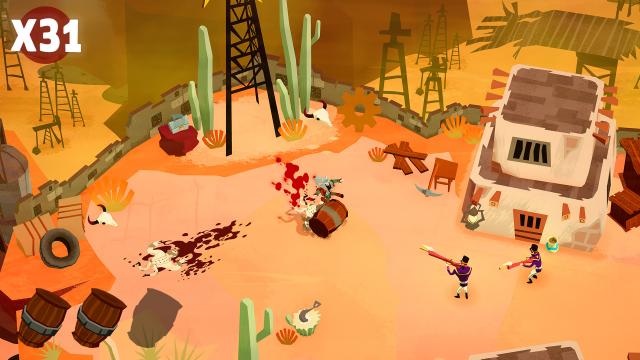
To recycle an old adage: it's about the journey, not the destination. There's a stronger connection to this revenge tale in the moment-to-moment slayings than in the writing pit-stops. Emphasizing its arcade roots, each level is broken up into successive stages with various difficulties and situations. This one rule remains universal: Mr. Wolf dies (again) in one hit. Discounting bosses, enemies require either one or two hits to go down. Every handheld object that isn't in possession of an enemy or glued to the soil can be used in your wanton destruction. Bash in a face with a fencepost, cleave someone in twain with an axe, free a man's torso from his legs with a sword, incinerate a crowd by setting everyone ablaze, and heave a clay pot at someone's noggin, along with many more options at your disposal!
This violent playground isn't without rules, of course. You don't get free rein with each of those items at all times; instead, each weapon breaks after 1-3 uses, or when your ranged weapon runs out of ammo. You're never wedded to one central weapon, but rather have a dalliance with whatever's in reach. The respectable enemy variety underscores that. Basic minions act as cannon fodder but many common enemies increase in complexity with anti-ranged inflatable tubes or anti-melee jagged shields. So, it's not quite as simple as grab whatever's in view and time your swing. Learning the ins-and-outs of enemy counters and weapon utility is integral to success.

Layered around this corpse-riddled cake is a decorative red icing. Even when the gameplay doesn't quite connect, the bloody Samurai Jack-inspired splendor consistently succeeds. To use another Tarantino analogy: remember the aftermath of the Crazy 88 fight in Kill Bill? Replace O-Ren's House of Blue Leaves with late 19th-century outdoor settlements and it's a similar effect when the body count gets high. The audio-visual components to the kinetic gameplay may not be the most technically mind-blowing, but they get the job done. There are some contentions to be found, such as the combat arenas gradually becoming overly-familiar in different backdrops or Vibe Avenue's soundtrack occasionally sounding misplaced; and yet, these are only infrequent distractions.
Judging by the established ruleset, the inspirations, and presentation, Bloodroots seems like a success. This is where a panoply of obnoxious nitpicks ruin the fun. Let me preface this: virtually every player will die several times over. The "fight, die, repeat" template is an expectation I initially welcomed. There's one personal threshold I tend to have though: a razor-sharp precision in fairness. In principle, fault should never lie with the game's systems and always with the player so they can learn. Although not always maintaining such a sterling standard, I believe that was a contributing role to FromSoft's Souls games taking off.
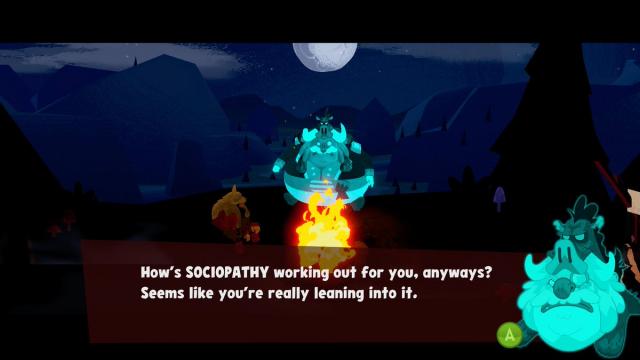
A number of minor & moderate faults contribute to missing my threshold. I'd like to break them down into bullet points:
There are a few other gripes, but these are the ones that prominently come to mind.
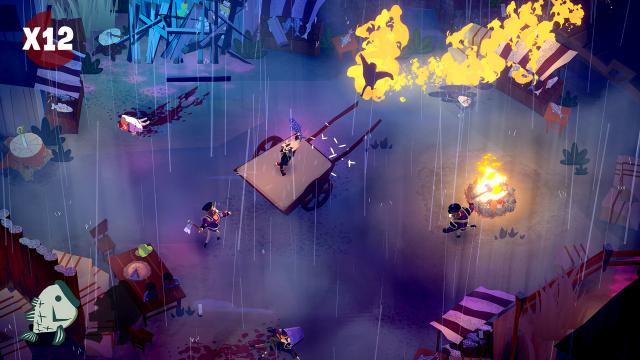
Various paper cuts aside, the toughest issue to get past is the gnawing repetition, which eventually sapped my engagement. It’s quite ironic: there's this potential weapon sandbox across so many stages, yet your successive failures quickly reveal the developer’s preferred path of least resistance. The adrenaline boost from making split-second moves is replaced in favor of the safest choice because I don't want to lose three minutes of progress for the seventh time.
The five-ish hour runtime is on the modest side as far as value is concerned, but the game's score attack grade system does provide ample replayability for anyone interested. But the above issues, both prominent & ancillary, drain any enthusiasm for going back through it. Given how I was a straight C/C+ student throughout these levels (minus bonus missions & boss fights), perhaps my word won't hold much regard; perhaps there is a more tantalizing template to discover after the first run, but I just can’t be bothered to see for myself.
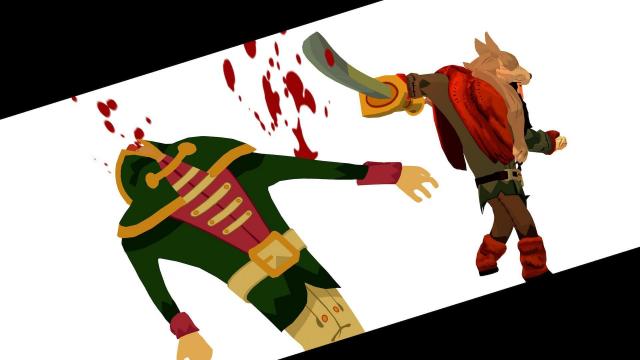
Inspiration can be double-edged sword. The giant's shoulders stood upon may elicit an unquenchable creative flame that serves a developer’s work; conversely, the ready-made comparison could sour the result should it not live up to expectations. Paper Cult threw Samurai Jack's aesthetic, Tarantino's offbeat writing, and Hotline Miami's lurid violence into a vat; to its credit, that confection is still a mixture I admire at a distance. It’s the closer inspection that reveals several bad roots.
Despite being one of newest writers on VGChartz, Lee has been a part of the community for over a decade. His gaming history spans several console generations: N64 & NES at home while enjoying some Playstation, SEGA, and PC titles elsewhere. Being an Independent Contractor by trade (electric, plumbing, etc.) affords him more gaming luxuries today though. Reader warning: each click given to his articles only helps to inflate his Texas-sized ego. Proceed with caution.









